AudioQuest Dragon Zero | Bass BiWire
Supernatural silence. I mean the blacker than black canvas for music, as if the Dragon Zero | Bass was devouring the light. The digital zero is the first day of creation, one can hear molecules splitting in the empty space. Still, this is not the silence of nothingness, rather of anticipation, as if something was in the air, like the electrical charge before a storm.
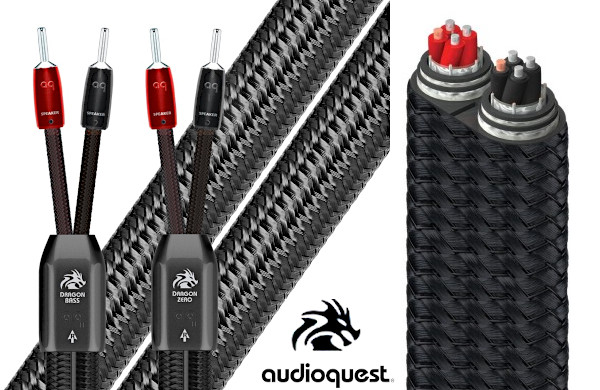
Diving into 1000 Mousetraps
I am sitting in my listening sofa, still intoxicated by the sound of the Dragon Zero | Bass fully bi-wired system. In the world of high end audio visual clues are often used to discuss the performance – adjectives like bright, dark, round, colorful and shimmering are all based on our visual stimuli. In the case of the Dragon Zero | Bass these adjectives completely fail as there are no leading characteristics that could be ‘the Dragon’s signature sound’ descriptors. The sound of this AudioQuest is so complete and natural that I may just say it just is and stop the review at this point. However, it would not explain enough remarkable differences between the Dragon and others.
AudioQuest Dragon Zero | Bass BiWire
Imagine a person diving into a trampoline covered in hundreds of set mousetraps. Yes, it is weird, I know, but go on reading. From the first contact with the sheet till the first twenty or so mousetraps are triggered just perhaps one second passes. We hardly notice a thing because everything is so quick and messy. If you do the same in the presence of a 4K camera like The Slow Mo Guys did in this video (https://www.youtube.com/watch?v=ewGAmiLuYCw ) you start noticing every small detail of the event. Watch the video from the 4’ mark. Now you know exactly which the first triggered mousetrap was, you see the trampoline sheet sending ripples towards the perimeter, and you are able to follow and describe the regular pattern of the catapulted mousetraps in the first few moments.
If I go back to music then I have another video for you – the resonance of real acoustic instruments as captured for Toronto Symphony Orchestra (https://www.youtube.com/watch?v=2jSnnGC-HpI), again in the slow motion. Incredibly documented origins of sound, aren’t they?
The AudioQuest Dragon Zero | Bass BiWire cables are exactly like this – they go beyond the usual listening experience and they let you hear things in an entirely different perspective. Just couple of weeks before I got the Dragons for the review I auditioned Siltech Emperor Double Crown and Tara Labs The Omega Evolution SP speaker cables in my resident system. Both offering highly attractive yet different sound. Although each of the two competitors exhibited an unprecedented level of insight into my music selection, none of the two kept the pace with the Dragons. Instead of excelling in some attributes - while being not so good in others - the Zero | Bass combination was simply the most complete and let me hear the recordings as if I could savor every second of any performance for a few seconds more, as if I was diving into the music through the 4K camera's lens.
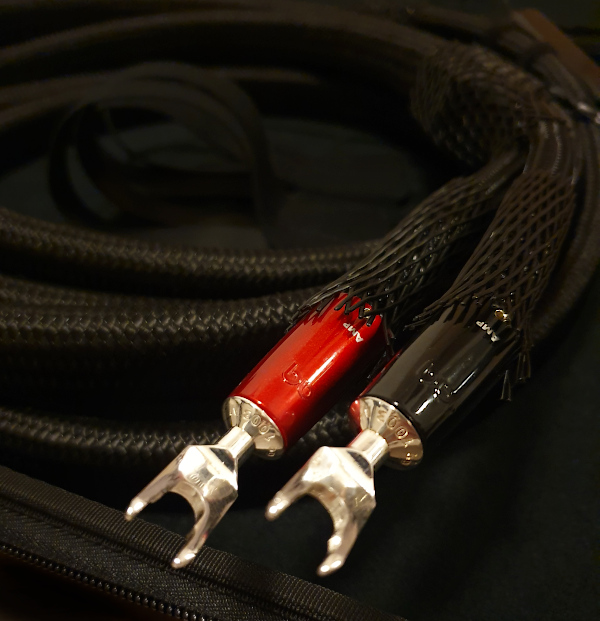
A cable for the wireless age
In the Dragon AudioQuest employs all the technical stuff that I described in the reviews of Wild Blue Yonder interconnects, Redwood speaker cables and Storm series power cords, notably their Dielectric Bias System (DBS) system in which the batteries keep the cable's dielectric constantly charged with DC 72V and thus – theoretically - removing the necessity of burning-in; for the Dragon the DBS system got newly developed carbon capsules with an RF filter to further suppress the noise.
The Dragon exclusively uses only Perfect-Surface Silver (PSS) solid conductors. According to AudioQuest solid conductors prevent strand interaction, a major source of cable distortion, and the highly polished silver minimizes distortion caused by the grain boundaries that exist within any metal conductor – this helps eliminating harshness which silver is often blamed for, and greatly increases clarity compared to any copper.
The Dragon’s spades and bananas (configuration is up to you when ordering the cable) are enrobed in silver, then cold-welded with silver paste onto the wires. AudioQuest does not use fancy metal splitters and connector housings not to disrupt the signal’s magnetic field, and to not induce RF Noise into the conductors.
But there is also some completely new stuff in the Dragon Zero | Bass that was taken from the AudioQuest’s Niagara power products and the Storm series power cables - here used for the first time in speaker cables:
The Dragon Bass cables include a phase-cancelling network that drains noise both from the cable as well as from the output stage of the amplifier. That also explains why the Dragon Bass should not be used as a full-range cable – though the technology inside greatly improves cables’ performance in bass/mids, it is said to impair the signal above 10,000Hz.
AudioQuest explains that by shielding the high and low conductors 100% from each other, it allows for no dielectric between the two and hence no characteristic impedance. The amplifier’s source impedance and loudspeaker’s load impedance are never matched for both face constant swings of current and voltage, and the speaker cable’s characteristic impedance is another variable in the already complicated transmission. Removing it should result into greater dynamic contrast, better audio transient response, and better bass slam.
Finally, Garth Powell - the man behind the new AudioQuest’s products - believes that today high-end audio cannot use traditional thinking, because we all now live in the environment polluted by high frequency noise generated by wireless networks, mobile phones, smart watches, Bluetooth transmitters and other appliances that were virtually non-existent two decades ago. In Garth’s words “Much of the low-level signal that carries the harmonics and spatial cues that define high-resolution audio is masked by induced radio-frequency noise. AQ’s comprehensive Linearized Noise-Dissipation System combines multiple shields and a carbon-based linearized resistive network that turns most of this noise into heat. By "linearized," we mean that the system is equally effective across extremely wide bandwidth, rather than at selected frequencies only, as is more common.”
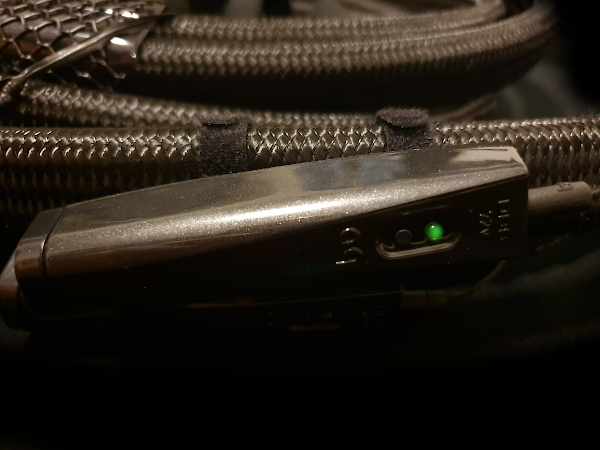
Meet the Dragons
The Dragon Zero and Bass loudspeaker cables represent the accumulation of everything that AudioQuest has learnt so far. They are the best cables that the company has ever built and, unfortunately, they are also the most expensive cables that they sell. The Dragon tops the Mythical Creatures series and is available in three configurations: as a full range cable (Zero), as a bass only cable (Bass) and as a pre-made BiWire set (Zero | Bass). This way AudioQuest facilitates many possible combinations – for example one can combine any good cable for highs and add the AudioQuest Dragon Bass for bass. So why to bother and have the BiWire if you can combine separate legs of the Zero and the Bass? The reason is twofold - cost stimulation and convenience. First, the set is priced more favorably than the two separate cables. Second, the Bi-Wire pair actually starts with only two (instead of four) connectors at the amplifier end and only then splits into two separate cable runs to finish with 2x2 connectors at the speaker end. For each channel you have one chunky pair of heavy cables that are joined on the amp end in a long V-shape. In the packaging AudioQuest provides clever polymer clamps that click on the cables and tie both the Dragons together, helping keep the floor tidy.
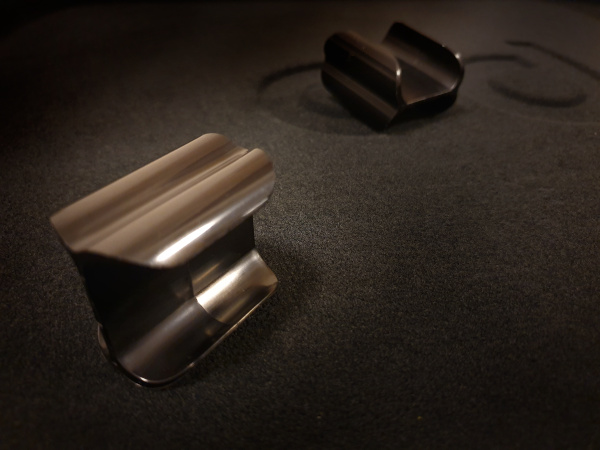
According to AudioQuest “Bi-wiring keeps the magnetic fields associated with bass energy out of the treble cable, allowing the upper frequencies to travel a less magnetically disturbed path, like taking the waves out of the water when you swim.” Usually it just takes two runs of the same cable to bi-wire loudspeakers. However, doubling-up two Dragon Zero cables is not recommended by AudioQuest – even though it would be good for their business. They say that two Zero cables’ unrestricted wide bandwidth can actually allow more RF energy into the amplifier, whereas using the Dragon Bass with Ground-Noise Dissipation technology in combination with one Zero significantly reduces total RF Noise. This way the improvements from BiWiring should be considerably more dramatic.
The physical experience with the Dragons is similar to what I have been experiencing with my Redwood Single BiWire cables for years: expect no tight twists and turns, next to zero axial torsion, and thick, short and rather inflexible end leads so you will need to push all the bananas or spades to the bi-wireable terminals of a speaker at once rather than one by one. Rewards? Nothing can be rearranged by accident, connectors fit super-tight, and the cable is mechanically resistant and reliable.
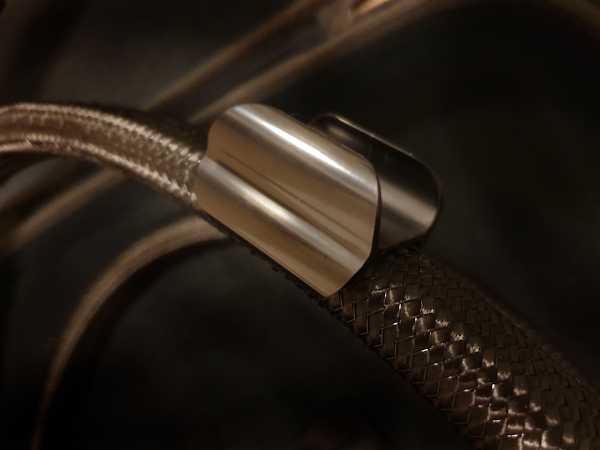
The sound of the Dragons
The Dragon Zero | Bass features some of the most authoritative and natural midrange I have heard from any system. Vocals, be it male or female, hang in the room like holograms, otherworldly articulated, sweet, and tangible. Well recorded a cappella ensembles like Fragile and Ringmasters are to die for through the Dragon Zero | Bass. The cable is very correct tonally plus it resolves with such a power that it borders an autopsy of sound without going that far that the music stops being entertaining and absolutely cohesive. I have heard speaker cables that had a tremendous sense for detail but it was distracting me from the music, the Dragon remains musical at all times.
Supernatural silence. I mean the blacker than black canvas for music, as if the Dragon Zero | Bass was devouring the light. The digital zero is the first day of creation, one can hear molecules splitting in the empty space. Still, this is not the silence of nothingness, rather of anticipation, as if something was in the air, like the electrical charge before a storm. The non-existent self-induced noise of the cable allows for hearing so far unheard nuances – the ground loop of a guitar combo, even small movements of a vocalist´s head, rhythmic sound of a foot tapping that finds its way into the microphone, birds singing outside the recording studio that are heard in between the bars, a tube buzzing in a trumpeter´s track. Any theory says the loudspeaker cable cannot be the reason for suddenly hearing this, though it is exactly what the Dragon Zero | Bass does.
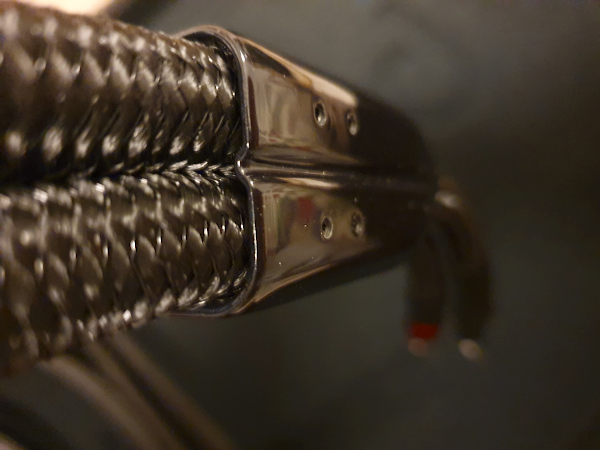
The electric bass of Mark Plati (who also did mastering) of David Bowie’s Thursday’s Child (Hours, Virgin) has everything one could wish for: round attack, punchy power, warm weight, resonant texture, and beautiful tone. His bass actually makes the track, and the album too, and through the Dragon Zero | Bass the performance is awe inducing - once you taste what the cable can do there is no way back. I started to dig in my music collection and found out that some material that was previously hardly listenable became enjoyable, just because what was muffled became tight and controlled suddenly.
The pieces like Angel (Massive Attack), No Sanctuary (Chris Jones), Come On In My Kitchen (Cassandra Wilson), and Dark Knight (original movie soundtrack) were like they got a shot of adrenaline; the bass was deep and incisive no matter at what position the volume knob was. The throbbing lows of Martelle in The Last to Know had the power of a panzerfaust, yet they stayed perfectly delineated from slightly left panned Les Paul guitar’s sweet transients. Hattler´s, Someone Alive is a techno piece. What, a techno piece? Through the Dragon Zero | Bass the well-recorded techno nails you to your sofa and the pulsing rhythm makes you move together with the furniture. Not that this track is a piece of art, it isn´t, but the Dragon combo makes the listening of such a music very physical, very personal and packed with energy to the very frequency extremes.
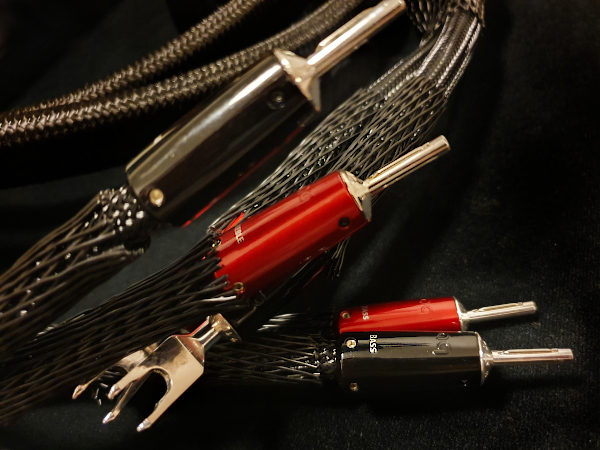
The Others
I can spent hours and hours by describing how the Dragon Zero | Bass sounds. The way the Dragon Zero | Bass lets me know how the songs are built, sound on sound, layer upon layer, remains beyond my comprehension. No other speaker cable that I’d auditioned came even close. The Siltech Emperor Double Crown BW is 49,000€, the TARA Labs The Omega Evolution SP is 37,000€ including speaker links, plus I can throw the Nordost Odin in the mix which was 39,000€ including Supreme jumpers when I auditioned it few years ago in my resident system. For the price of any of these cables one can buy a good car including Tesla Model 3. All three are insanely good, none of them as complete as the Dragon Zero | Bass Full BiWire combo.
The TARA Labs The Omega Evolution SP cables were impressive with hilarious colors, grip on lows, firmly delineated spatial images and, above all, expansive soundstage that filled the whole room. The TARA had quite a bit more damped background canvas than the AudioQuest, as if, opposed to the absolute light-devouring blackness of the Dragon Zero | Bass, the Omega Evolution’s darkness was filled with some dark matter which was more fluffy in nature. Where the AudioQuest presented a stark contrast of incredible transient speed, the TARA accelerated as if the sound was kept by gravity. This lent a bit of liquidity to the TARA’s sound which was actually quite attractive and more romantic than the more pristine AudioQuest’s presentation. It was the size of pictures that put the Omega Evolution SP off the map: the instruments were consistently oversized. Not that it is not mesmerizing as the scene in front of my ears was like an open-air venue, yet I could not get accustomed to a five meters wide piano, a cupboard sized cello, and a trap set that would ask for 2 drummers to handle it. The TARA Labs had, however, more open and see-through soundstage than the Siltech Emperor Double Crown. The latter had lovely analogue smoothness and fantastic liquid midrange, was elegant and completely organic. The Nordost Odin, as impressive as I remember it, sounded more muscular but less nuanced, compared to the Siltech, but it was more spatial where the Emperor Double Crown seemed to be congested, especially in the depth of its soundstage. The Siltech also lacked the bass punch that the Odin had, and the Odin lacked the ultimate resolution of bass textures that the Dragon had, the latter sacrificing neither the punch nor weight.
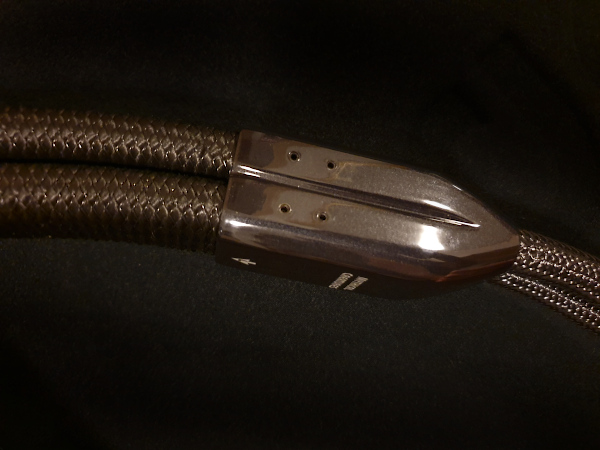
Music at your fingertips
It is less known that during recording sessions of Kind of Blue (Miles Davis) one of the tape recorders was running slower and the sound of the vinyl pressing had sharper pitch consequently. This contributed to the popularity of the record as the sound was better through the muffled vintage playback equipment. The SACD (Kind of Blue, Columbia), however, uses the alternate version of the recording – the one with correct pitch. Whereas the Nordost was capable of a similar effect and threw extra shimmer on the recorded material especially on upper mids and lower highs that resulted into highlighted hiss of the master tape as a side-effect and which I could find in my notes from the listening session with the Odin speaker cables, the Siltech Emperor Double Crown was noticeably darker and slightly muted, still highly resolved. The TARA Omega Evolution SP was, at least to my ears, a tonally more accomplished cable, and also the only one that could really challenge the Dragon Zero | Bass, sans its sound staging realism.
All the cables were open, detailed, transparent and airy, and had firm grip on sound, yet it was the Dragon combo that conveyed the sense of breathing air around the Davis’ trumpet. Also both saxes (Adderly/Coltrane) let me follow the air entering the instrument through the mouthpiece and leaving it through the keys and bell. The dynamism of this event was a study of lifelike spatial mapping without distracting the listener from the intimacy of the music. With the Dragon all improved: the rhythm, atmosphere, and presence, notes just floated with the sense of musical ‘rightness’, and I could not identify any trade-offs, no ‘buts’. These were really magic moments.

Sweet waiting
The Dragon Zero | Bass, no matter what the DBS wisdom says, needs a proper burn-in. The sonics of the brand new set of cables were changing significantly during the first 24h and continued doing so, though in much smaller scale, for next about 300 hours. This is quite a long period but the cable opened up, got more effortless, honed its dynamic skills and gave me, the listener, time to assess it more critically after the initial exaltation. The DBS system should keep the cable in the state of readiness and it does so, provided that you use it at least 2-3 times a week. Once there is a longer pause, a week or two, then the Dragons need a shorter burn-in again. Few hours do the trick and it is worthy waiting. This review was assembled from my earlier notes while I was listening to the Dragon Bass | Zero almost constantly during my home confinement in Covid crisis for several weeks in row. It made this involuntary break very digestible. If this is not the ultimate cable then I don’t know what.
Price at the time of the review: 2x 2.5m, 52,400 EUR
Contact: AQ s.r.o., Červenka, tel. +420 585 342 232, www.aq.cz



